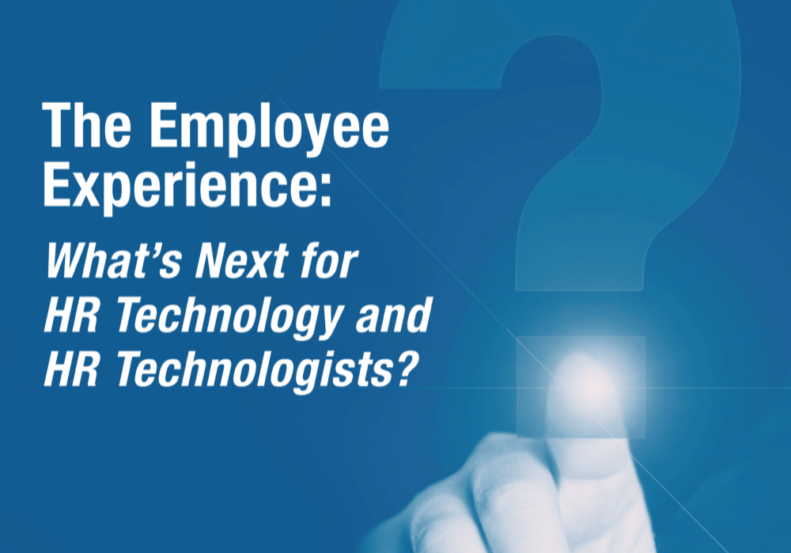Culture is, by all accounts, a powerful force. Indeed, as is often said, “Culture eats strategy for breakfast.” But what is this powerful force that gives strategy a run for its money? We tend to think of culture in two ways. First, as something akin to “the force” in Star Wars. This force, if harnessed, can be very powerful. If only we could figure out how to harness it. How to change it.
The other way we think of culture tends to be as a replication of some personal psychological trait of an individual. In this narrative, culture is “hard charging” or “bro culture” or “caring.” While both of these capture a small part of culture, they don’t really capture the usable essence of culture very well.
So, you have this thing which is totally important—maybe more important than strategy—but it’s highly amorphous. A mystical, mysterious, enigma, wrapped in a riddle. Culture is powerful but can feel intangible [2–4]. And it is often treated as if it were a mysterious cloud. The question is – is culture something you can plan for, build, strategize, reify? We offer that if we are clear on what culture is, we can purposefully and intentionally build and change it [2,5–7].
For that, we need to understand mental models [2,5,6,8]. When we interact with the world, we take in information, we structure it in some way to make sense of it—the result of which is a mental model [2,9,10]. Mental models simply represent the way we understand something. Mental models and culture are fundamentally linked [2,5,6]. It is a set of shared mental models that form an organization’s culture [2,5,11]. The crux of a powerful culture is the degree to which organizational members share the same meaning (mental model) of the important things that guide an organization towards its vision. Therefore, the most critical mental model that must be commonly understood and shared across all members of the organization is the Vision—the desired change they hope to bring about through their work [2,6,7,11].
Critically coupled to the vision, is the mission. Mission differs from vision (these two are often conflated or confused) such that mission is the work you do repeatedly to accomplish the vision [2,6,7,11]. In other words, a vision is what you see in the future, whereas a mission is the things you do repeatedly in the present to bring about the vision. Effective organizations distinguish between the two and relentlessly communicate both the vision and mission so they are understood the same way by each member of the organization. In other words, each member must have the same mental model of where the organization is heading and how to get there. While this seems obvious, consider the enormous amount of research, writing, consultancy, and the search for best practices around how to get everyone “on the same page” to behave like an adaptive, superorganism. The key to a super-organization is to embed vision, and mission into an adaptive culture. It’s not enough to have a good vision and mission in place, they must be purposefully implemented and communicated across the organization every day. It is these shared mental models that drive adaptive organizational behavior [2,6,7,11].
We seek adaptivity and organizational agility because the world has become increasingly volatile, uncertain, complex, and ambiguous (VUCA). This reality requires a new way of thinking about organizational systems that aligns more with the reality of how systems exist in the real world. Success requires sharing mental models that promote learning and adaptation [2,5,12]. This is due to the network structure of the organization, with the people as agents and the culture as the simple rules that guide their local (daily) behavior. This means we have the power to build and change culture by changing our mental models and the mental models of organizational members towards the outcomes we seek [2,5,12].
Culture is what happens when people possess the same mental models. This is in contrast to the norm of sharing information. We all can share a PDF or a memo, but we can’t easily share our understanding of things [2,5]. In other words, every person must build their own meaning (or mental model). This is why leaders must work to help members build a shared meaning from which the organization can direct its efforts towards a common vision [2,4,6]. Importantly, while you may have employees, customers, or partners coming and going at various times and rates as part of your work, the culture of an organization persists (i.e., a dissipative structure). So, where culture is concerned, success is always due to the sharing and diffusion of the mental models.
Successful leaders who can truly transform organizations differentiate culture from individual and organizational learning and leverage the power of mental models to drive change. The table below illustrates the differences among them such that:
- Culture is a set of mental models shared by members of the organization;
- Organizational Learning is a change in mental model shared by agents;
- Individual Learning is a change in mental model;
- A mental model is made up of information structured through thinking to build meaning; and
- Thinking is the act of distinguishing, organizing, and relating ideas from multiple perspectives (i.e., DSRP) [9,13–19].
In other words, when a single person learns something, that is called individual learning. But, when many people learn something, that’s organizational learning. Note that learning, in its simplest form, is a change in a mental model. Importantly, we need to distinguish between organizational learning (when more than one person changes their mental model) and culture (the degree to which the meaning of the mental model is shared by everyone).
If a leader can harness the power of mental models and VMCL they can build and shape culture intentionally. And, if you don’t, you will only have a few well written statements on your website or office walls divorced from your vision and daily work.
Changing culture is never easy. But, changing culture without a clear understanding of what it is, is impossible. Culture must be built [2,5,12,20]. But how do you do it? We suggest focusing on a process for incrementally building support for the culture change you seek—rather than attempting an organization-wide change at the start. In other words, start by asking yourself who is on board with the organization’s key mental models and who is not (and to what degree). Then incentivize early adopters who get off the fence and show fence sitters how much success the adopters are having through “party photos.” This is a powerful tool for organizational change called the “Culture Building Graph” or CBG; it is not a compliance model, but more of an indicator of your progress in creating the culture or cultural change you want.
The crux is creating a workforce that is aware of and challenges their mental models which facilitates individual learning and drives organizational learning. Organizational learning increases organizational capacity that allows your organization to execute your mission to bring about your vision.
Culture is a force, but it is not a mysterious or mystical force. It is a force that comes from sharing mental models. Knowing this simple fact changes the equation because it tells us what to do on the ground. Rather than wishing or praying that the force “may be with you” you intentionally “make the force be with you.”
References
- Quote Research. Culture Eats Strategy for Breakfast. 2017.
- Cabrera D, Cabrera L. Flock Not Clock: Align People, Processes and Systems to Achieve Your Vision. Cabrera Research Lab. 2018.
- Cabrera, D. “Embed Stand Down and Bubble Up Into Your Culture Now So You’ll Be Ready Later.” Systems Thinking Daily. 2021;21: 2.
- Cabrera L, Cabrera D, Gibson H. “Leapfrog Leaders: Accelerating Systems Leadership Skills.”
- Cabrera D, Cabrera L. “Change Happens One Mental Model At A Time Until You Hit A Committed Minority: CBG as an Organizational Change Tool.” Systems Thinking Daily. 2021;21: 7.
- Cabrera L, Cabrera D. Adaptive Leadership for Agile Organizations. In: Cabrera L, Cabrera D, Midgley G, editors. The Routledge Handbook for Systems Thinking. London, UK: Routledge Press; 2022.
- Cabrera D, Cabrera L. “Systems leadership: designing an adaptive organization using four simple rules to thrive in a complex world”. Cabrera Research Lab; 2018.
- Cabrera D, Cabrera L. “Reality bias: The mother of all cognitive biases.” 2018.
- Cabrera D, Cabrera L. “Systems Thinking Made Simple: New Hope for Solving Wicked Problems in a Complex World.” Ithaca: Odyssean Press; 2015.
- Cabrera L, Cabrera D. Defining Learning: A Change in Mental Model. In: Cabrera L, Cabrera D, Midgley G, editors. The Routledge Handbook for Systems Thinking. London, UK: Routledge Press;
- Cabrera D, Cabrera L. “The Four Simple Rules of Organizations.” Systems Thinking Daily. 2020;20: 6.
- Cabrera, D., Cabrera, L. “Core Tenets of Organizational Culture.” Systems Thinking Daily. 2020;20: 9.
- Cabrera D. Systems Thinking. Cornell University; 2006.
- Cabrera D, Cabrera L, Cabrera E. Distinctions Organize Information in Mind and Nature: Empirical Findings of Identity–Other Distinctions (D) in Cognitive and Material Complexity. Systems. 2022;10.
- Cabrera D, Cabrera L, Cabrera E. “Systems Organize Information in Mind and Nature: Empirical Findings of Part-Whole Systems in Cognitive and Material Complexity”. Systems. 2022.
- Cabrera D, Cabrera L, Cabrera E. Relationships Organize Information in Mind and Nature: Empirical Findings of Action-Reaction Relationships in Cognitive and Material Complexity. Systems. 2022.
- Cabrera D, Cabrera L, Cabrera E. “Perspectives Organize Information in Mind and Nature: Empirical Findings of Point-View Perspective in Cognitive and Material Complexity.” Systems. 2022.
- Cabrera D, Cabrera L, Cabrera E. “The ‘Fish Tank’ Experiments: Metacognitive Awareness of Distinctions, Systems, Relationships, and Perspectives (DSRP) Significantly Increases Cognitive Complexity.” Systems. 2022;10.
- Cabrera D, Cabrera L. “DSRP Theory: A Primer.” Systems. 2022.
- Cabrera, D., Cabrera, L. “Old or New, Organizational Culture Must Be Built.” Systems Thinking Daily. 2020;20: 9.
End Notes
1 Distinctions, Systems, Relationships, and Perspectives [9,13–19]
2 Vision, Mission, Capacity, and Learning [2,6]
3 Culture Building Graph [5]




